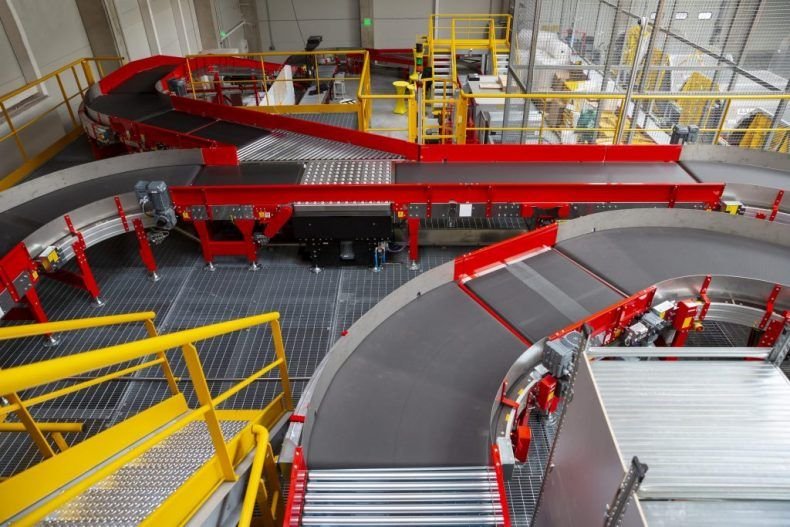Historically, fulfilment centres relied heavily on human workers to carry out tasks such as picking, packing, and inventory management. Workers would have to walk up and down long aisles of racking or shelving and handle items by hand. While this process was generally effective, it was extremely time-consuming, labour-intensive, and prone to human error. With the significant growth of e-commerce in the past few years – particularly since the global pandemic – and the expectation of same-day or next-day delivery, traditional methods of fulfilment using manual handling are no longer able to keep pace with operational demands, customer expectations, and the need for efficiency in a fast-evolving logistics industry.
Warehouse automation technology is bridging this gap by integrating advanced systems that streamline operations, reduce the risk of human error, and improve productivity. Automation doesn’t just make fulfilment centre processes faster; it enhances efficiency, accuracy, and safety, enabling businesses to meet modern customer demands more effectively. The introduction of Automated warehouses and advanced systems such as Warehouse Control Systems enables fulfilment centres to handle high order volumes without compromising service quality, while significantly improving operational efficiency.
Several cutting-edge technologies are at the forefront of warehouse automation within fulfilment centres. Here, we explore some of the most impactful ones:
Automated Guided Vehicles (AGVs) and Autonomous Mobile Robots (AMRs)
AGVs and AMRs are advanced robotic systems designed to transport items within a warehouse without the need for manual intervention. AGVs follow predetermined paths, while AMRs are more flexible, using sensors and cameras to navigate autonomously and adapt to their surroundings. These types of robots can efficiently transport goods from one area of the warehouse to another, reducing the need for human workers to perform repetitive tasks such as lifting heavy goods, which increases productivity, lowers operational costs, and reduces the risk of injury.
Robotic Picking and Packing Systems
Robotic arms equipped with advanced sensors and machine learning algorithms can accurately and efficiently pick and pack products. Using advanced software, these robots can identify different items and handle fragile objects with precision. Robotic picking systems speed up the fulfilment process by reducing the time it takes to find, lift, and place items in designated bins or packages, which is particularly valuable in environments with high SKU (stock-keeping unit) counts.
Automated Storage and Retrieval Systems (AS/RS)
AS/RS systems use automated machinery to store and retrieve items with minimal human intervention. These systems can include cranes or shuttles that usually work in conjunction with vertical storage equipment such as racking or shelving. AS/RS optimise space utilisation in warehouses, allowing for higher-density storage and quicker retrieval times, which significantly boosts fulfilment speed and accuracy, enhancing overall warehouse efficiency.
Advanced conveyor systems combined with sortation solutions help streamline product movement within the warehouse. These systems automatically sort products based on key criteria such as their destination, size, or weight, transporting them to the appropriate area for packing and shipping. With sortation systems in place, fulfilment centres can handle high order volumes with greater speed and efficiency, making them vital to the logistics industry’s rapid growth.
Artificial Intelligence (AI) and Machine Learning (ML)
AI and ML power the intelligence behind automation and are increasingly utilised in fulfilment centre operations. AI provides optimised picking routes, a reduction in downtime, and improved decision-making by analysing order patterns, inventory levels, and delivery times to enable operational strategies to be enhanced. Predictive analytics using AI can also forecast potential spikes in demand, enabling fulfilment centres to prepare inventory requirements in advance and avoid stockouts or delays, providing fulfilment centres with real-time data and real-time insights for predictive maintenance.
Internet of Things (IoT) and Real-Time Tracking
IoT enables real-time tracking of products and assets within a warehouse environment. Smart sensors on shelves or bins, and vehicle (AGVs and AMRs) usage all provide highly valuable data on inventory levels, item locations, and product conditions. With IoT integration, warehouse managers gain a clear view of fulfilment centre operations and can make intelligent, data-driven decisions to improve efficiency and reduce waste. IoT plays a vital role in future-proofing fulfilment warehouses, supporting supply chain management by providing insights that contribute to a responsive supply chain.








